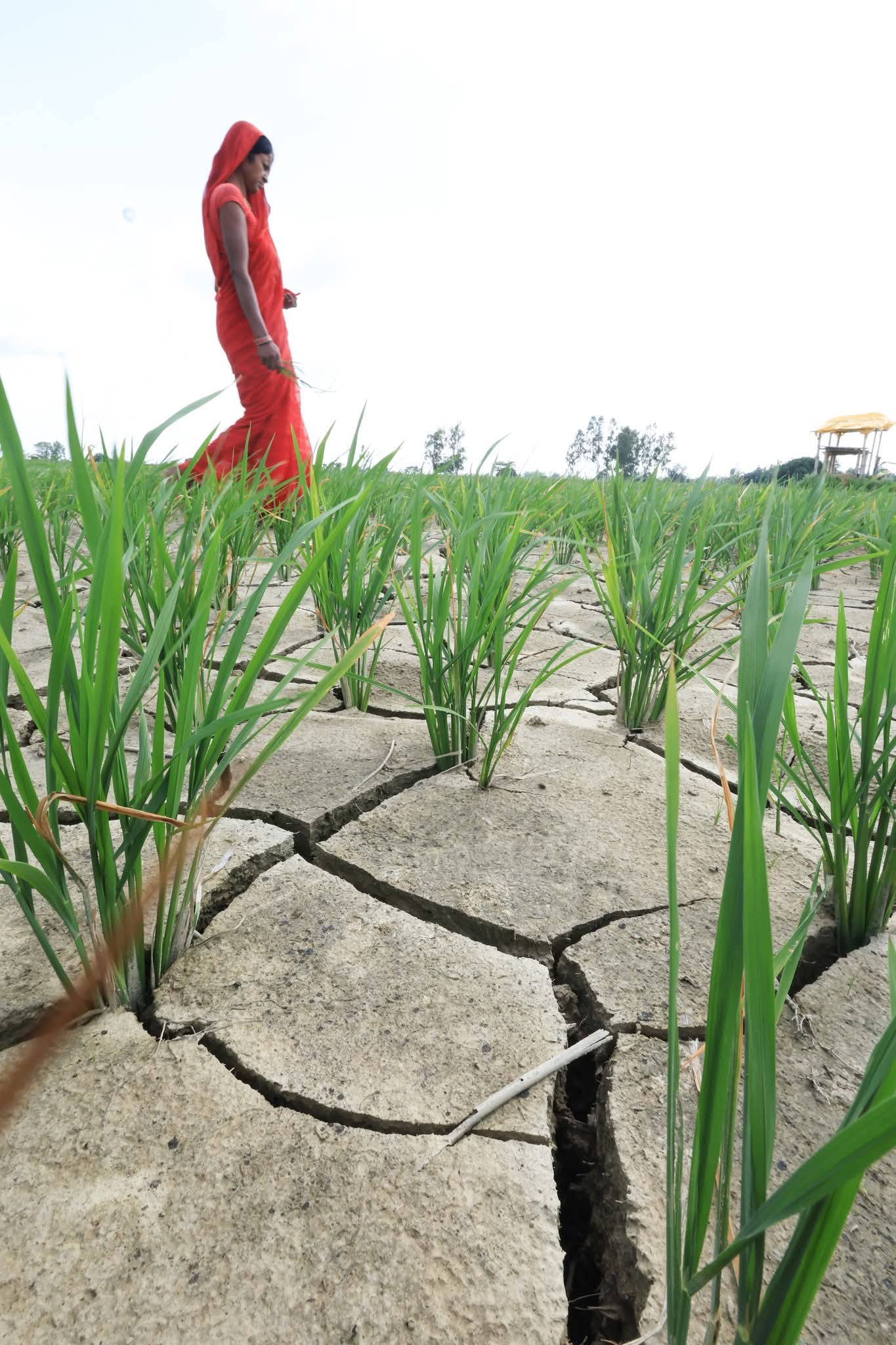Kathmandu, August 13, 2025
The intensifying impacts of climate change are putting children in Nepal at unprecedented risk, with extreme weather events disrupting lives, livelihoods, and essential services. From prolonged droughts to sudden floods, rising temperatures to melting snow, the country is witnessing climate extremes that are no longer rare but routine.
Last month, several districts of the Madhesh Province endured weeks without rainfall during what should have been the peak monsoon season. In Parsa district, families struggled with acute water shortages. Children like Neetu and Rita were forced to walk long distances under blistering heat to collect water, returning home drained and in pain.
Experts warn that the climate crisis is already undermining children’s health, education, and overall well-being. Extended dry spells threaten access to clean water and safe sanitation, while extreme heat exacerbates the risk of dehydration, heatstroke, and waterborne diseases. Disruptions in schooling are also becoming more frequent, as climate-related disasters force communities to shift their focus to survival.
Nepal, ranked among the most climate-vulnerable countries in the world, faces mounting challenges in protecting its youngest citizens from the escalating crisis. Climate activists and child welfare organizations are urging urgent investments in climate-resilient infrastructure, sustainable water management, and early warning systems to safeguard future generations.
As the nation confronts these realities, the message is clear: climate change is not a distant threat - its effects are here and now, and children are paying the highest price.